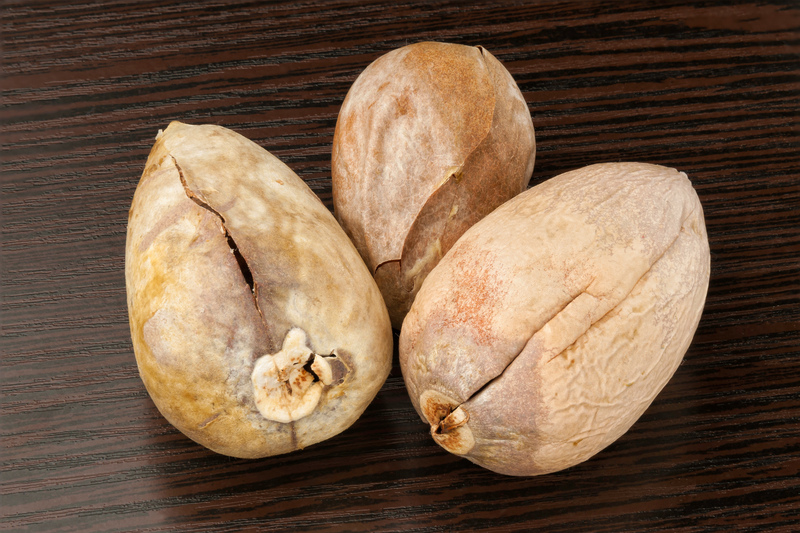Creating a Pollinator-Friendly Garden Space
Posted on 08/05/2025
Gardening has long been a favorite pastime for many, offering beauty, tranquility, and a sense of accomplishment. However, in recent years, more attention has been drawn to the environmental impact of our gardens. One of the most significant contributions we can make is to support pollinators--those buzzing bees, butterflies, hummingbirds, and other creatures that play a crucial role in the ecosystem. This article will guide you through creating a pollinator-friendly garden space that is both attractive and ecologically beneficial.
Understanding the Importance of Pollinators
Pollinators are vital to the health of our ecosystems. They help plants reproduce by transferring pollen from the male parts of a flower to the female parts. This process is crucial for the production of fruits, seeds, and the propagation of plant species. According to the United States Department of Agriculture (USDA), about 75% of the world's flowering plants and 35% of global food crops depend on animal pollinators. Without these essential creatures, many plants, including those that provide food for humans and animals, would face severe declines.

Identifying Pollinators in Your Region
Before planning your garden, it's essential to identify the pollinators native to your region. Common pollinators include:
- Bees (honeybees, bumblebees, solitary bees)
- Butterflies and moths
- Hummingbirds
- Bats
- Beetles
- Flies
Research local species to understand their habits, preferred plants, and times of activity. This knowledge will help you select the most suitable plants and create a habitat that meets their needs.
Choosing the Right Plants
Selecting the right plants is crucial for attracting and supporting pollinators. Opt for native plants, as they have evolved alongside local pollinators and offer the best nutritional sources. When choosing plants, consider those that provide nectar and pollen throughout the entire growing season. Here are some plant categories to consider:
Wildflowers:
- Purple coneflower (Echinacea purpurea)
- Black-eyed Susan (Rudbeckia hirta)
- Milkweed (Asclepias spp.)
Herbs:
- Lavender (Lavandula spp.)
- Basil (Ocimum basilicum)
- Thyme (Thymus vulgaris)
Shrubs and Trees:
- Butterfly bush (Buddleja davidii)
- Serviceberry (Amelanchier spp.)
- Maple (Acer spp.)
Diversity is key. A garden with a variety of plants will attract different types of pollinators and provide a buffet of resources.
Designing Your Garden for Pollinators
Creating a pollinator-friendly garden involves more than just plant selection. Consider these design principles to make your garden a haven for pollinators:
Cluster Plants: Grouping plants in clusters rather than scattering them can make it easier for pollinators to locate and maximize their foraging efficiency.
Plant in Layers: Incorporate various plant heights and layers, including ground covers, perennials, shrubs, and trees. This approach mimics natural habitats, offering shelter and nesting options.
Provide Water Sources: Pollinators need water, too. Install a shallow water dish or a birdbath with stones for perching. Change the water regularly to avoid mosquito breeding.
Create Shelter: Include elements like log piles, brush heaps, and bare soil patches to offer nesting sites and protection from the elements.
Avoiding Harmful Practices
While creating a pollinator-friendly space, it's essential to avoid practices that could harm these beneficial creatures:
Avoid Pesticides: Pesticides can be deadly to pollinators. Opt for organic gardening methods, such as natural predators, neem oil, or insecticidal soaps.
Reduce Chemical Fertilizers: Overuse of chemical fertilizers can harm soil health and the delicate balance of the ecosystem. Use compost and organic matter to enrich your soil naturally.
Minimize Lawn Areas: Lawns provide little benefit to pollinators. Replace portions of your lawn with wildflower meadows or pollinator-friendly borders.
Maintaining Your Pollinator Garden
A pollinator-friendly garden requires ongoing care and attention. Regular maintenance will ensure that your garden continues to support a diverse array of pollinators:
Deadheading and Pruning: Regularly remove spent flowers to encourage more blooms. Prune plants to maintain shape and promote healthy growth.
Watering: Ensure that plants receive adequate water, especially during dry spells. However, avoid over-watering, as soggy conditions can harm both plants and pollinators.
Weed Control: Keep weeds in check to reduce competition for resources. However, some "weeds" like dandelions can provide early-season nectar, so be selective.
Monitor and Manage Pests: Keep an eye out for pest infestations and address them promptly using organic methods.

Engaging the Community and Educating Others
Creating a pollinator-friendly garden is an excellent opportunity to engage with your community and spread awareness about the importance of pollinators. Here are some ways to get involved:
Join Local Gardening Groups: Connect with other gardeners to exchange tips, share plants, and advocate for pollinator-friendly practices.
Host Garden Tours: Invite neighbors and friends to tour your garden. Explain the benefits of each plant choice and offer advice on creating their pollinator gardens.
Work with Schools: Partner with local schools to create pollinator gardens on school grounds. This initiative provides hands-on learning opportunities for students.
Participate in Citizen Science Projects: Engage in projects that monitor pollinator populations or plant-pollinator interactions. Your observations can contribute to valuable research.
Conclusion
Creating a pollinator-friendly garden space is a rewarding endeavor that benefits not only the environment but also brings joy and beauty to your surroundings. By understanding the needs of local pollinators, selecting appropriate plants, and employing sustainable gardening practices, you can create a vibrant habitat that supports these essential creatures. Moreover, sharing your knowledge and engaging with the community can amplify the positive impact of your efforts. Ultimately, by taking steps to support pollinators, we contribute to the health and resilience of our ecosystems, ensuring a brighter future for generations to come.




